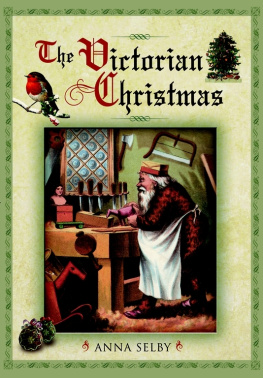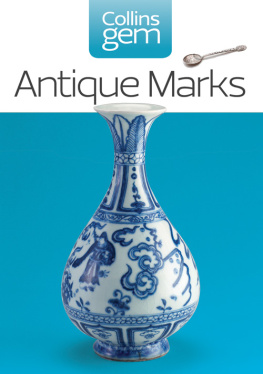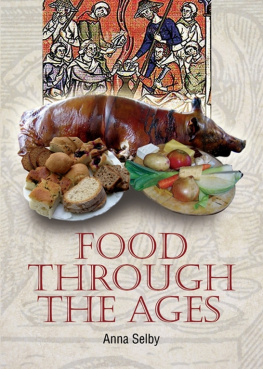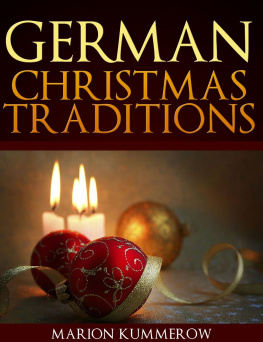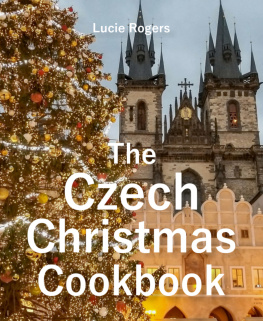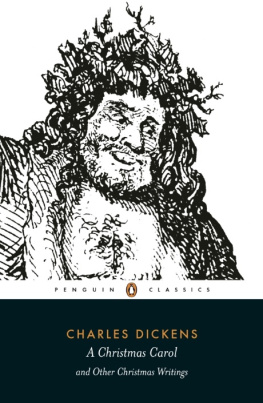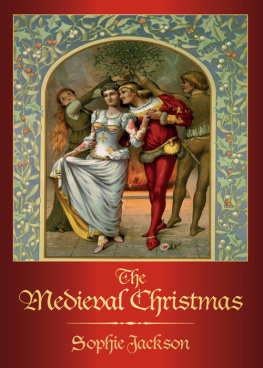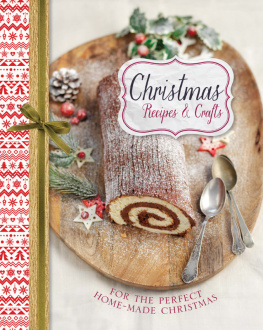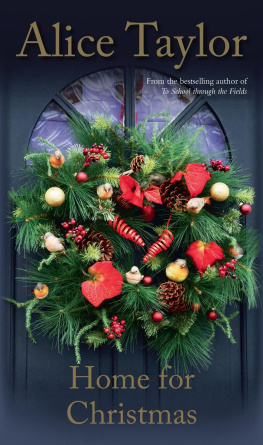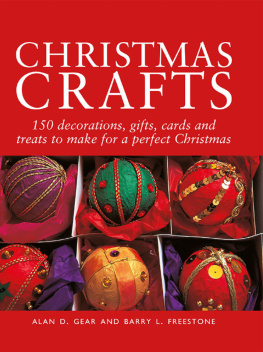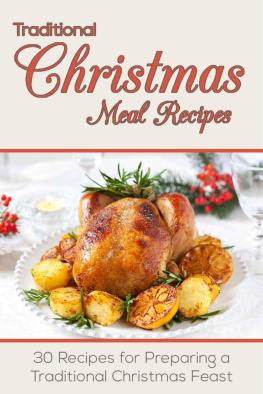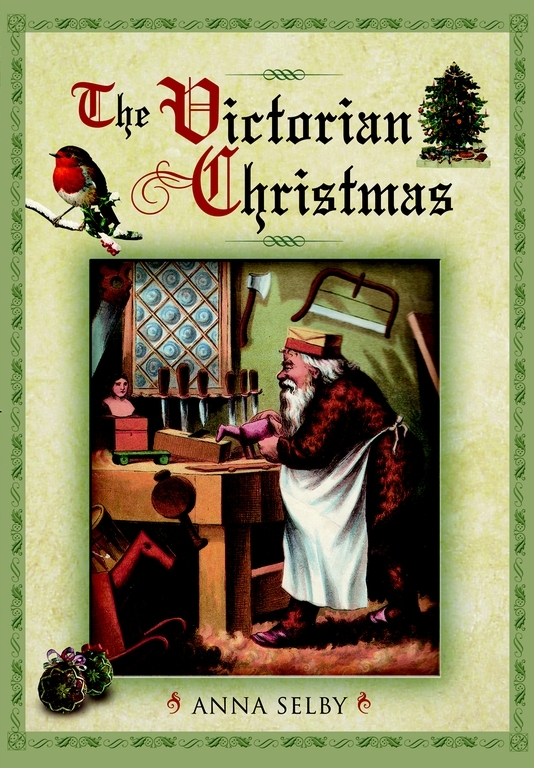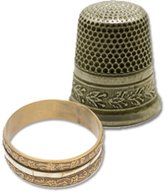Bibliography
Acton, Eliza, Modern Cookery for Private Families (London, 1845)
Banffshire Journal, The
Beeton, Mrs, Book of Household Management (S. O. Beeton, 1861)
Beeton, Mrs, Family Cookery (Ward, Lock & Co, 1899)
Bible, The
Cassells, Dictionary of Cookery (Cassells, 1874)
Chambers, Robert, Book of Days (W. & R. Chambers, 1862-64)
Craig, Diana, Miscellany of Cooks Wisdom , A (Running Press, 1992)
Thomas Davies, Dramatic Miscellanies (London, 1784)
The Delineator magazine
Dickens, Charles, Christmas Carol , A (Chapman & Hall, 1843)
Dickens, Charles, Christmas stories (various) ( Household Words 1850-62)
Dickens, Charles, Christmas Tree , A ( Household Words 1851)
Dickens, Charles, Great Expectations ( All the Year Round , 1860-61)
Dickens, Charles, Sketches by Boz (John Macrone, 1836)
Dickens, Mamie, My Father as I Recall Him ( Ladies Home Journal , 1892)
Evelyn, Right Worshipful Richard, Esq, Articles (see Chambers, Book of Days )
Francatelli, Charles Elme, The Cooks Guide and Housekeeper and Butlers Assistant (Richard Bentley, 1869)
Gaskell, Mrs, Cranford ( Household Words 1853)
Harpers Bazaar (1868, 1873, 1896)
Kilvert, Rev Francis, Diary of Francis Kilvert, 1870-79 aka Diary of a Country Curate (Folio Society, 1977)
Major, L., The Pytchely Book of Refined Cookery (Chapman and Hall, 1886)
Moore, Clement Clark, Night Before Christmas , The ( The New York Sentinel , 1823)
Punch magazine (1849)
Rundell, Mrs (Maria), New System of Domestic Cookery , A (John Murray, 1805)
Soyer, Alexis, Shilling Cookery for the People , A (Routledge & Co, 1855)
Various authors, Receipt Books
Walsh, J. H., The Economical Housekeeper (Routledge & Co, 1857)
Warne, Mary Jewry, Model Cookery (London, 1869)
Permissions
The author would like to thank the following for providing the illustrations in this book:
Lawrences Fine Art Auctioneers of Crewkerne - three bottles (p39) Shoop, Fiona Victorian Christmas cards
Thomaston Place Auction Galleries of Thomaston, ME - Victorian toy sleigh (p78) and 1880 doll (p79)
With thanks to Shutterstock for the remainder of the images
Chapter 1
Stir-up Sunday
Stir-up Sunday was the day that traditionally saw the cook and indeed the whole Victorian family in the kitchen making the pudding and cakes for Christmas. It was considered good luck for everyone to give the mixture and stir and make a wish of their own while doing so. So it would be logical to assume that is where the name stir-up Sunday derives. In fact, it comes from the collect of the day that the Victorian family would have heard that morning in church: Stir up, we beseech thee, O Lord, the wills of thy faithful people, that they plenteously bringing forth the fruit of good works may of thee be plenteously rewarded. This would sometimes be parodied by the naughtier boy choristers to Stir up, we beseech thee, the pudding in the pot. And when we do get home tonight well eat it up hot. The precise date of Stir-up Sunday changes year by year as it always falls on the last Sunday before Advent. Advent is based on Easter, which is the Churchs principal movable feast, and an exact date is difficult for the layman to predict, but Stir-up Sunday has to fall some time during the second half of November. Christmas cakes and, especially Christmas or plum puddings, need at least six weeks to mature and yield their full flavour. And, in fact, many people would make two Christmas puddings at a time and leave one till the following year when it was thought to be much richer and more delicious.
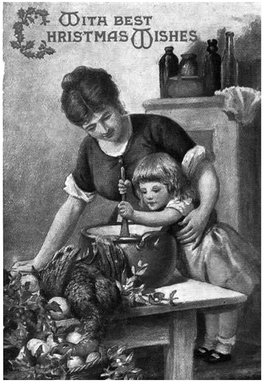
Charms and trinkets-box
Making the Christmas pudding was not a purely culinary affair. It was hedged around with traditions and superstitions. The mixture would be stirred by everyone in the house, eyes closed while they made a wish. The stirring had to go in a clockwise direction or the wish would not be granted. During the stirring, the cook would add the charms that would be found in someones piece of the pudding on Christmas Day. The usual trinkets included a ring, a coin (usually a silver farthing) and a thimble. When the diners ate their pudding, the one who found a ring could expect a wedding, the coin symbolised the gaining of wealth and the thimble meant depending on the interpretation either a life of blessedness or spinsterhood.
There is some debate over where the tradition of trinkets in the pudding began. The Victorians were certainly the first people to use them in the spherical Christmas pudding as they invented it. However, the custom of hiding a charm in a cake is a pagan one and goes back to Twelfth Night Cake. The charm in Twelfth Night Cake was a bean and the lucky finder became the king of Twelfth Night whereby hangs another tale to be told later in this book.
The Christmas Pudding
The Victorians invented, among so many other things, the muslin cloth. While this may seem small fry in comparison to the railways and the telephone, the muslin cloth nevertheless transformed nineteenth century cooking in the spherical shape of the pudding. While this could be sweet, in the modern sense of pudding, it could also be savoury whatever the ingredients, the muslin cloth held the round pudding together while it steamed. But in both sweet and savoury puddings, suet was the vital ingredient and a particularly useful one for filling the hungry bellies of the poor.
In the less wealthy household, where meat was scarce, it was usual to have something filling before you reached the meat course. This was often a suet pudding or a Yorkshire pudding and it would take the edge off the appetite so that less meat would be needed. Mrs Gaskells Mr Holbrook gave this view of domestic economy in her novel Cranford .
When I was a young man, we used to keep strictly to my fathers rule, No broth, no ball; no ball, no beef and always began dinner with broth. Then we had suet puddings, boiled in the broth with the beef: and then we had the meat itself. If we did not sup our broth, we had no ball, which we liked a deal better; and the beef came last of all, and only those had it who had done justice to the broth and the ball.
By far the most long-lasting ball pudding of the Victorians was, though, the Christmas pudding which has retained its popularity to this day. They took older recipes originally, it was a sloppy, porridgey dish and made a solid pudding. They also took out one of the most important original ingredients beef. Mincemeat and minced meat were in earlier times the same thing. Only during the nineteenth century did mincemeat come to refer to the dried fruit and spices that are the principal ingredient in mince pies. Early plum puddings used minced beef and mixed it with sugar, spices and dried fruit. The Victorians did, of course, keep the suet (as do most puddings today) as a binding ingredient. Suet is the raw animal fat that is usually found around the kidneys and so they did, in effect, keep some meat content in the recipe.

